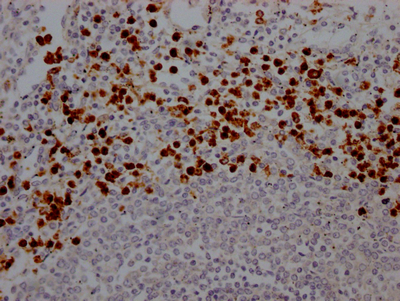MPO is largely produced by neutrophils in order to defend against infections. MPO is involved in the formation and maintenance of an alkaline environment in freshly formed phagosomes, which is ideal for combating bacteria. MPO generates powerful oxidants, such as hypochlorous acid (HOCl), which kill bacteria and other invading pathogens. On the other hand, MPO plays a role in the development of a number of chronic inflammatory disorders, including atherosclerosis, neurological diseases, arthritis, and cancer.
The recombinant MPO antibody was produced by cloning antibody genes into an expression vectors, which were subsequently introduced into mammalian cells to provide animal-free antibody production. This MPO antibody has been validated in ELISA, IHC. It has the features of improved affinity, stability, and consistency between different batches.




